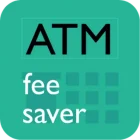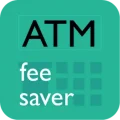Wondering how to pay for metro and bus rides in Kosovo - cash only, or do cards work too?
I loved how cheap Kosovo buses were. From my hostel in Peja, I rode into Rugova Canyon for just a couple of euros, paid in coins straight to the driver. No apps or cards needed - just euros in small notes. In Pristina, buses run often, and you can hop on for €0.40. Even intercity routes like Pristina-Mitrovica are affordable. Banks like ProCredit and TEB have ATMs in every neighborhood, so getting euros for rides was easy.
Public transport in Kosovo felt outdated. Staying in Pristina’s Ulpiana neighborhood, I always had to scramble for coins because drivers didn’t want big bills. Once I tried to ask if cards worked, the driver laughed. Even at Pristina Bus Station, the ticket desks were “cash only.” No apps, no vending machines, just cash. It’s cheap, yes, but annoying if you’re used to modern systems. My tip: break down your notes at a Raiffeisen Bank ATM before riding.
I was based in Pristina near the Swiss Diamond Hotel and used buses daily to reach the university. Every time I paid the driver €0.40 in coins. Once I tried handing a €5 note, and he looked annoyed since he had no change. When I went to Prizren, I bought my ticket at the main bus terminal for €4, paid in cash at the counter. No sign of card terminals anywhere. Kosovo transport is simple but old-school.
Kosovo doesn’t have a metro, but Pristina has city buses and lots of minibuses. They are all cash-only. I stayed near Mother Teresa Square and rode buses to Germia Park, paying 40 cents (EUR) directly to the driver. Intercity buses from Pristina Bus Station to Peja or Prizren were also cash-only, though ticket offices at the station accept euros in notes. Cards are rarely used for transport, even though Raiffeisen Bank ATMs are everywhere.


